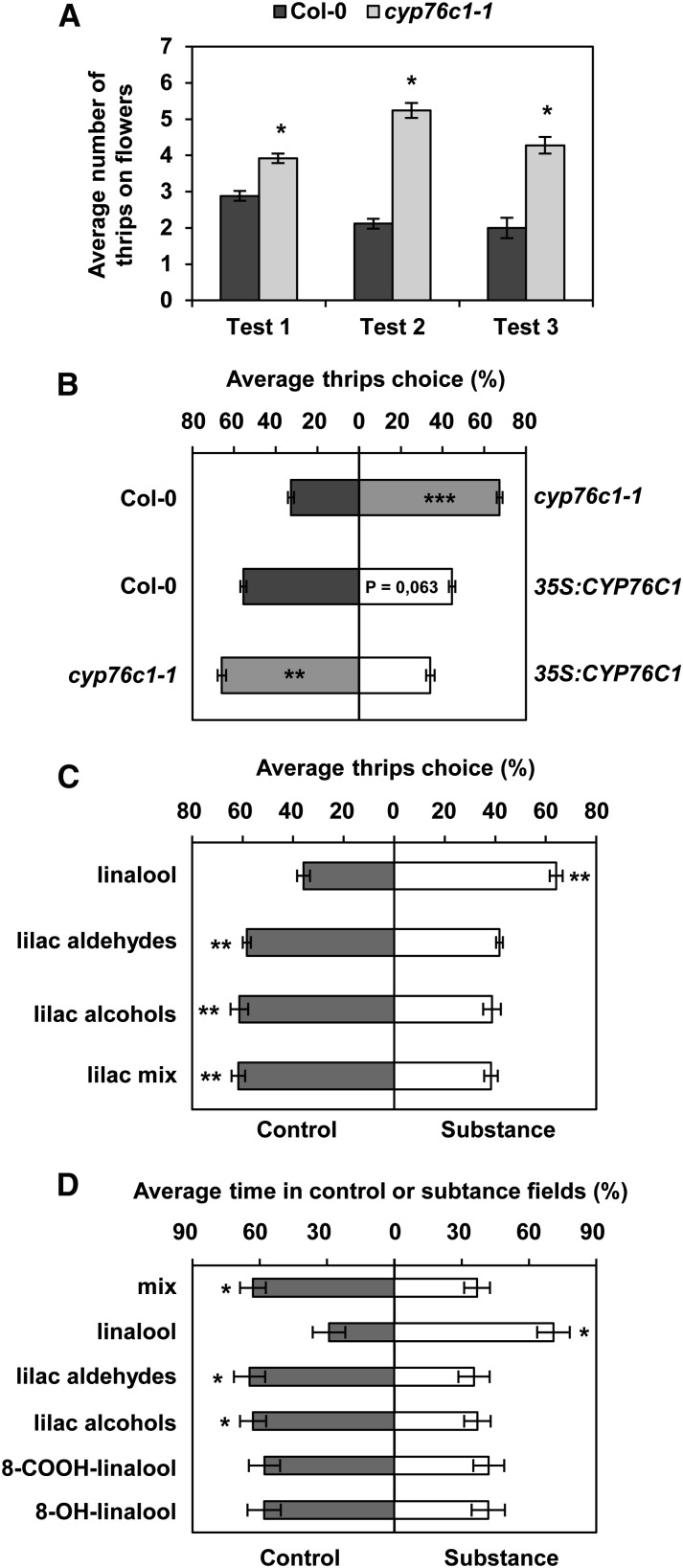Figure 8.
Behavior of Flower Pollinators and Floral Antagonists on CYP76C1 Mutant Lines and Pure Compounds.
(A) Thrips dual-choice test between flowers from the wild type and cyp76c1-1 mutant. Results represent the average number of thrips (±se) on the flowers from five biological replicates and for three independent tests. Statistically significant differences relative to the wild type are indicated (Wilcoxon test: n = 5, *P ≤ 0.05).
(B) Thrips dual-choice test between volatiles from Col-0, cyp76c1, and 35S:CYP76C1 flowers performed in a Y-shaped arena of an olfactometer. Three headspace combinations were tested: Col-0 versus cyp76c1-1, Col-0 versus 35S:CYP76C1, and cyp76c1-1 versus 35S:CYP76C1. Results represent the average thrips’ choice + se from five independent replicates, each using different individual plants and for which choice of 30 to 40 individual thrips was scored. Statistically significant differences are indicated (paired t test: n = 5, **P < 0.01; ***P < 0.001).
(C) Thrips dual-choice test between pure compounds performed in Y-shaped arena of an olfactometer. Results represent the average thrips’ choice + se from six independent replicates and for which the choice of 30 individual thrips was scored. One hundred micrograms of each compound alone or 100 µg of both lilac compounds for the mix were used for each assay. Statistically significant differences are indicated (paired t test: n = 6, **P < 0.01).
(D) Hoverfly dual-choice test between pure compounds performed in a star-shaped arena of an olfactometer. Results represent the average percentage of time + se spent in substance or control fields for 30 individual hoverflies. One hundred micrograms of each compound alone or in mix were used for each assay. Statistically significant differences are indicated (paired t test: n = 25, **P < 0.05).

